Apple cider vinegar for hair growth? My failed experiment
Ten years ago, I decided to start rubbing apple cider vinegar (ACV) into my bald spot every night. Why? I’d read on a hair loss forum that ACV was a powerful health tonic – and that its antimicrobial, anti-inflammatory properties might help regrow hair.
My experiment didn’t last long. Apple cider vinegar isn’t exactly pleasant-smelling. Its aroma lingers on pillowcases, and when it gets into your eyes, it hurts a lot. After a month, I gave up on my ACV topical. It just wasn’t worth the hassle, and at the time, the clinical data supporting apple cider vinegar’s use as a hair growth product didn’t seem all that robust.
In recent years, apple cider vinegar has made a resurgence in the hair loss blogosphere. Today, some dermatologists claim that applying apple cider vinegar may improve scalp health, fight hair loss, and stimulate new hair growth.
This begs the question: has the literature on ACV changed? Are there new studies on ACV and hair regrowth? Or is apple cider vinegar’s resurgence more a function of influencer marketing than it is clinical evidence?
In this article, we’ll dive into the studies and contextualize the claims made by marketers. Then we’ll set the record straight on apple cider vinegar’s purported hair-growing effects, and find out if this vinegar is worth your time and energy.
Key takeaways
- Health bloggers claim that apple cider vinegar (ACV) might help fight hair loss. The key claims: (1) ACV’s mild acidity may help improve skin barrier functionality, and (2) ACV’s acetic acid is antimicrobial. Therefore, ACV can help quell the over-colonization of inflammatory microorganisms linked to male and female pattern hair loss: Malassezia and P. acnes.
- There is evidence that ACV might promote a more acidic scalp environment. Hypothetically, this may improve the production of ceramides – a building block of the epidermis and a critical component to skin barrier functionality. In this regard, health bloggers’ claims aren’t so farfetched.
- At the same time, evidence shows that ACV isn’t universally antimicrobial: it inhibits the growth of Malassezia (good for hair loss), but it proliferates the growth of P. acnes (bad for hair loss).
- Because of this – and because there are no clinical studies available that explore ACV use for hair growth – we’re hesitant to recommend ACV to most hair loss sufferers. Even still, there are some scenarios where its use might be warranted. We’ll explore these below.
What is apple cider vinegar (ACV)?
Apple cider vinegar (ACV) is a type of vinegar made from the fermentation of apples. It looks like apple juice, but its flavor is much sourer, tangier, and more pungent.
Apple cider vinegar
What’s responsible for apple cider vinegar’s distinctive flavor? The presence of the vinegar itself: acetic acid.
During the process of fermentation, yeast turn sugar into alcohol. Then, Acetobacter bacteria turn alcohol into acetic acid. The result? A vinegar is born.
Yeast + Sugar >> Alcohol; Vinegar + Acetobacter >> Acetic Acid (Vinegar)
Like most vinegars, apple cider vinegar is mostly water (94%) and acetic acid (5%). The remaining 1% is a combination of apple residue and mucus-like material known as “the mother”: an agglomeration of proteins, enzymes, and commensal microorganisms that assist with the fermentation process.
Historically, vinegar has been used for a wide array of purposes: the management of wounds, hand-washing, treatment of poison ivy, and even as a folk remedy for diabetes (1). Today, researchers are exploring the benefits of vinegar as it relates to its antimicrobial and blood glucose-modulating properties.
What makes apple cider vinegar (ACV) unique?
It depends on who you ask: marketers or scientists.
Some apple cider vinegar products are sold as organic. Others are sold with “the mother”. When trying to differentiate ACV from other vinegars, marketers often emphasize these things – as well as their purported health benefits.
Unfortunately, it’s hard to discern ACV from other vinegars within the scientific literature. This is because the majority of studies supporting ACV aren’t actually on apple cider vinegar. Rather, they’re on acetic acid: the acid found in all vinegars.
It’s important to know this, especially when evaluating the evidence on ACV and hair loss. After all, that evidence could just as well apply to white vinegar (made from grain alcohol), balsamic vinegar (made from white Trebbiano grapes), or rice vinegar (self explanatory).
Is there any science to support apple cider vinegar as a hair loss treatment?
The short answer: there’s no direct evidence that apple cider vinegar, acetic acid, or the “mother” of ACV can improve hair loss. In other words, no clinical studies have been conducted to test whether apple cider vinegar or its constituents, when applied to a balding scalp, can regrow hair.
The long answer: we can’t use the “absence of evidence” to dismiss ACV as a therapeutic hair growth agent. Rather, we have to also evaluate all of the evidence on ACV – what it does inside the body, how its mechanisms might apply to thinning hair, and whether there are any anecdotes of hair growth – in order to come to a fairer conclusion about this vinegar.
This is what the rest of this article does.
We’ll start by outlining some of the underlying causes of hair loss. Then, we’ll look at the properties of apple cider vinegar. Do these properties address these underlying causes? And if so, do they address these causes at the magnitude required to actually improve hair loss outcomes?
We’ll start with skin health, its relationship to hair loss, and ACV’s potential beneficial effects.
Skin health: how is it connected to hair loss?
“Skin health” is a broad term referring to the functionality of our largest organ: the skin. Hair also grows out of the skin. So, it goes without saying that skin quality and hair quality are often intertwined.
Beyond our diet, lifestyle, and environment – there are (at least) two gatekeepers to proper skin functionality: skin barrier integrity and skin microflora. Here’s how they might relate to hair loss, and how ACV might help.
#1. Skin barrier integrity
Our skin is made up of two distinct layers: the dermis (the innermost layer of our skin) and the epidermis (the outermost layer).
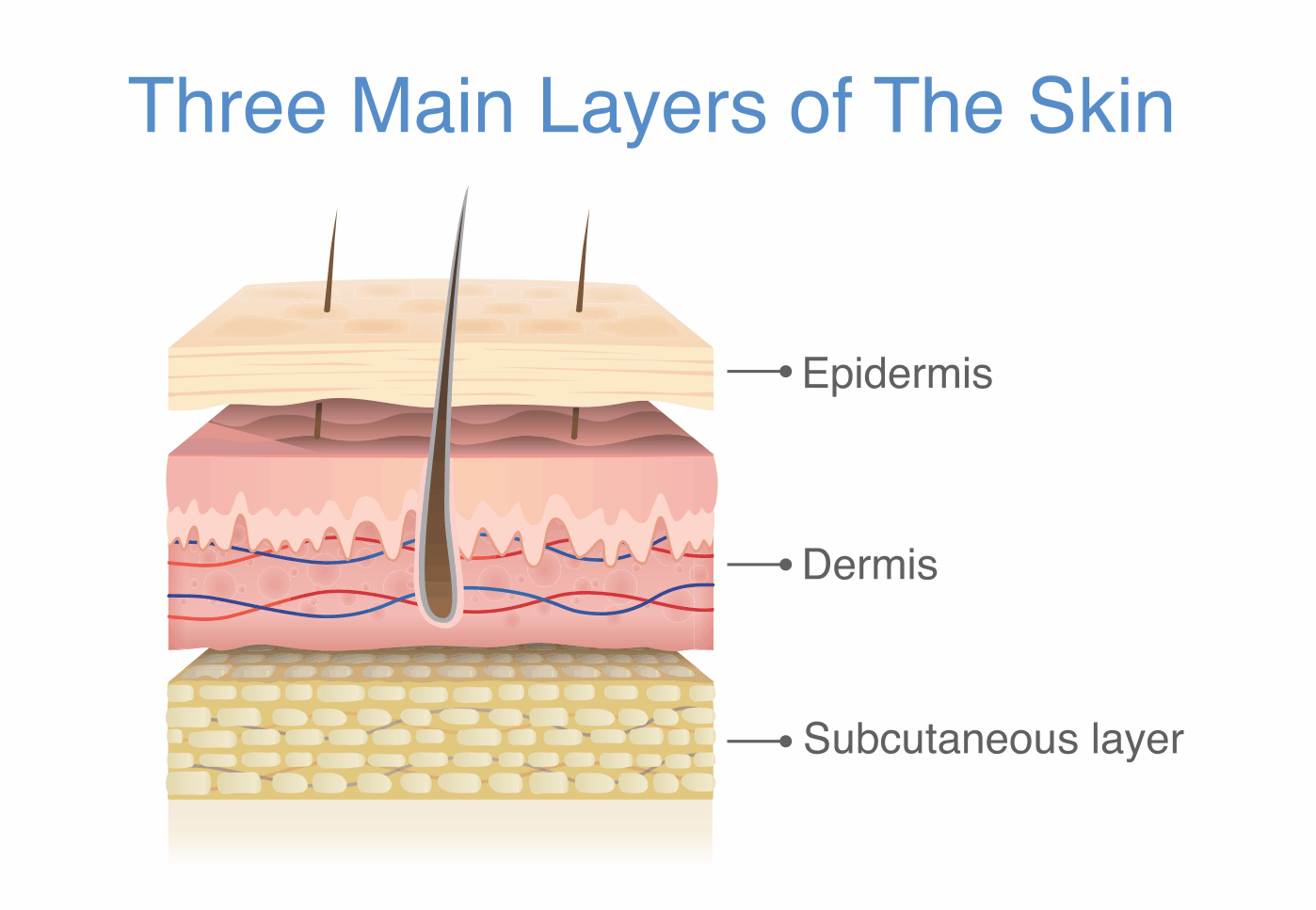
Within the epidermis, there is an additional layer called the stratum corneum – also known as the skin barrier (2). The stratum corneum is made up of important building blocks called ceramides (3).
The skin barrier’s main function is to protect the lower levels of the skin from harmful agents (i.e., pollutants, allergens, irritants, and pathogenic microbes). Without a functioning skin barrier, these agents can interact with skin cells, incite inflammation, and worsen certain skin conditions.
Moreover, with a compromised skin barrier, our skin also has trouble staying hydrated. If you’ve ever dealt with dandruff, you might have experienced a form of skin barrier dysregulation: the skin barrier opens up, water leaves the skin (causing flakiness), and irritation ensues.
#2. Skin microflora
Microbes exist as a component of the skin’s immune system. However, certain scalp conditions can cause some bacterial to overgrow. This can lead to an overproduction of bacterial metabolites that have the potential to damage the scalp.
For instance, P. acnes, a species of bacteria best known for its role in acne, can release pro-inflammatory molecules called porphyrins (4). Malassezia species yeast can release a fatty acid called oleic acid that disrupts the skin barrier (5). In either case, bacterial overgrowth can lead to damage of scalp tissue (read: bad scalp health).
So, how does our skin barrier and skin microflora potentially relate to hair loss?
Skin barrier / skin microflora disruptions can raise inflammation, which may lead to hair loss
The connection is relatively straightforward: anything that increases skin inflammation has the potential to increase hair shedding. In that regard, disruptions to both ceramide production and skin microflora have been shown to not only associate with skin inflammation, but also hair loss. Here’s the evidence.
Pathogenic microorganisms, inflammation, and hair loss
Yeast species like Malassezia are associated with both skin inflammation and dandruff. Interestingly, Malassezia overgrowths are also commonly observed in hair shedding disorders (i.e., telogen effluvium) and rapid-onset androgenic alopecia (i.e., pattern hair loss) (6). The likely connecting point? Malassezia increases inflammation surrounding the hair follicles, which can trigger hair shedding if the inflammation remains persistent (7).
Another potentially pathogenic skin microorganism that may increase hair loss? P. acnes. One study found P. acnes colonizations in the scalp sebaceous glands of 38% of balding men. The potential pathway: P. acnes ingests sebum (i.e., the oil that lubricates our hair) and excretes porphyrins; these porphyrins react with UV radiation to trigger inflammation; the body responds by sending more sebum to the scalp (since sebum is anti-inflammatory), and the process repeats.
A hair loss feedback loop: inflammation, androgens, sebum, and microorganisms
With enough inflammation, tissue surrounding the hair shaft swells. This “pinches” the hair strand, which signals an early entry into catagen (i.e., the beginning stage of hair shedding). If the P. acnes infection becomes severe enough, this inflammation-driven hair shedding may actually lead to visible hair loss (8).
P. acnes infection linked to hair casts and alopecia
This is also why antimicrobial shampoos – like 2% ketoconazole – have shown an ability to improve this hair loss. These shampoos are antimicrobial and anti-fungal; they help to quell the overgrowth of pathogenic microorganisms in the scalp skin. In doing so, they can decrease hair shedding and improve pattern hair loss outcomes for both men and women.
Interestingly, ACV also has antimicrobial properties. In fact, this is one reason why some dermatologists have endorsed ACV as a possible therapeutic for hair loss. But is the evidence robust enough for a full recommendation?
Maybe, maybe not.
How might ACV help improve skin health (and hair loss)?
#1. ACV is antimicrobial
Traditionally, vinegars were used as anti-infective agents to facilitate wound healing (1). Today, studies have confirmed that acetic acid has antimicrobial properties – even at the low concentrations found in apple cider vinegar (9).
So, if ACV is antimicrobial, and if antimicrobial shampoos like ketoconazole improve hair loss… then ACV must also improve hair loss, right?
Wrong. Keep in mind that ACV and ketoconazole shampoo are not an apples-to-apples comparison. One is a natural vinegar used in salad dressings; the other is a powerful anti-fungal, anti-microbial synthesized in a lab. Yes, they both have antimicrobial properties. But the magnitude of effect could be wildly different between these two things.
Rather, the better question to ask is:
Is the concentration of acetic acid found in apple cider vinegar strong enough to quell pathogenic microorganisms linked to hair loss (i.e., Malassezia and P. acnes)?
The answers are surprising, reveal the importance of specificity when we ask any scientific question.
The good news: case studies show that 2% acetic acid (i.e., roughly the amount in apple cider vinegar) can reduce skin infections related Malassezia species (10). So, if we’re dealing with dandruff-related hair loss linked to a Malassezia overgrowth, then ACV might help.
The bad news: while some studies show that acetic acid in apple cider vinegar can reduce many microbial overgrowths, other studies show that ACV facilitates the growth of P. acnes (11).
Why? Well, much like how acetic acid is produced by bacteria to create vinegar, some bacteria also produce skin acids, like acetic acid. These acids have selective antimicrobial properties to help keep bacterial colonies balanced. Some bacteria are sensitive to acetic acid; others aren’t. Some bacteria thrive in a more acid environments; others don’t.
Interestingly, P. acnes happens to use acetic acid as a weapon to ward off other bacteria from over-colonizing. The more acetic acid (up to a point), the fewer competitive bacterial colonies, and the better P. acnes can proliferate.
In this context, apple cider vinegar may increase the risk of exacerbating hair loss linked to a P. acnes overgrowth. This may be particularly true for cases of pattern hair loss, where p. acnes colonization is found in 38% of cases.
Without a clinical study, we just don’t know. In any case, this gives us significant reservations in widely recommending ACV as a natural antimicrobial alternative to ketoconazole, or as a therapeutic agent to combat pattern hair loss.
Fortunately, ACV isn’t just antimicrobial. It’s also mildly acidic, which may help promote hair health through a different set of mechanisms: those involving skin barrier protection.
#2. ACV is mildly acidic
Apple cider vinegar has a pH level of 2-3, which is considered mildly acidic. Interestingly, when it comes to acidity versus alkalinity, there’s evidence that parts of our skin actually favor an acidic environment for health. And in this regard, ACV might have some therapeutic benefit. Here’s how this might relate to our hair.
As a refresher, ceramides are the building blocks of our epidermis (i.e., the outermost layer of our skin). If our ability to produce ceramides is impaired, our skin barrier begins to break down. This leads to dermal dehydration, dandruff, inflammation, and a host of other problems that may partly contribute to hair loss.
Interestingly, studies show that the production of ceramides only occurs at an acidic pH (9). Thus, our epidermis must remain in a slightly acidic state for those tissues to produce ceramides and maintain skin barrier functionality.
On that note, a shift toward an alkaline environment seems to have negative impacts on our hair health. For instance, studies show that alkaline hair shafts are frizzier, more damaged, and more prone to breakage (11).
There are many factors that can create a more alkaline environment in our scalp skin. Two common culprits: (1) harsh surfactants in shampoos, and (2) mineral deposits in shower water.
We’ll dive into how surfactants and hard water can disrupt skin barrier health in a future article. For now, just know that acetic acid – or apple cider vinegar – might be useful in combatting a shift toward alkalinity. In doing so, its application might help promote the production of ceramides, restore skin barrier health, and thereby improve our hair.
Again, without a clinical study, we just don’t know.
How to use ACV for hair growth + the biggest mistake people make
We’ve explored the hypothetical evidence supporting (and not supporting) ACV as a hair growth agent. So, let’s say that after reviewing this evidence, we decide to start applying ACV in hopes of improving hair loss. How do we go about doing this?
Well, it is as simple as applying apple cider vinegar to our scalps (and hair strands). But, there’s one component that many people neglect: diluting the vinegar.
At a pH of 2-3, undiluted apple cider vinegar is more acidic than we need it to be. We also don’t want to go overboard with the acetic acid, because we don’t know what that “happy medium” is – i.e., where bacterial overgrowth is balanced, not stimulated.
So, our best option is to mimic exactly where the skin finds balance: between 4 and 5.5 (11).
To do this, we’ll want to dilute apple cider vinegar with water before using it on our scalp and hair. Here’s how:
- Have a vessel that can hold up to 2 cups of liquid on hand.
- Fill the vessel with 1.5 cups of water.
- Add 1 tsp of apple cider vinegar to the water.
- Mix.
The final pH of this solution should be between 4 and 4.5, plenty acidic to be used on the hair and scalp.
The best time to use this solution is after you’re likely to expose your hair to an alkaline substance (usually showering). All you’ll need to do is have your vessel on hand and pour the mixture throughout your hair, making sure to cover the scalp. Try to use the rinse at least a few times each week, and maybe even more frequently at first (to gauge how your scalp and hair react).
There’s no need to rinse this solution out. Doing so might counteract the acidification we are trying to achieve by using the ACV rinse. And, considering the solution is so highly diluted, it shouldn’t leave the characteristic sour smell on your hair – the one I grew to dislike during my first ACV experiment.
Summary
Apple cider vinegar (ACV) is one of the most popular “home remedies” for hair health. Unfortunately, the evidence supporting ACV’s use as a hair growth agent is relatively weak – much like the pH of the vinegar itself.
There is evidence that ACV is antimicrobial, and that the vinegar can decrease colonizations of Malassezia – a pathogenic yeast species often found in the scalps of subjects with dandruff and pattern hair loss. However, there’s also evidence that ACV may increase the proliferation of P. acnes – a pathogenic bacteria that resides in the sebaceous ducts, and is found in the scalp skin of 38% of men with pattern hair loss. Therefore, it’s unclear how helpful (or harmful) ACV’s antimicrobial properties might be.
There’s also evidence that ACV is acidic, and therefore may help to promote a mildly acidic pH in the scalp skin. Hypothetically, this may improve skin barrier functionality by increasing the production of ceramides – i.e., building blocks of the epidermis that are only manufactured when the skin leans more acidic than alkaline. This could be particularly helpful for those who consistently expose their scalps to hard water and/or shampoos containing harsh surfactants – both of which can push skin acidity to a more alkaline state.
Without a clinical study on ACV, we just won’t know the answers to these questions. So for now, think twice when any blogger or dermatologist recommends ACV for hair health.
If you’re going to try ACV as a hair growth aid, we recommend trying them as a rinse during or after your shower. Just remember to dilute the ACV prior to use – so that you can reduce both the smell and the vinegar’s overall acidity.
Have questions or comments about apple cider vinegar for hair loss? Please leave them in the comments below!

Rob English is a researcher, medical editor, and the founder of perfecthairhealth.com. He acts as a peer reviewer for scholarly journals and has published five peer-reviewed papers on androgenic alopecia. He writes regularly about the science behind hair loss (and hair growth). Feel free to browse his long-form articles and publications throughout this site.

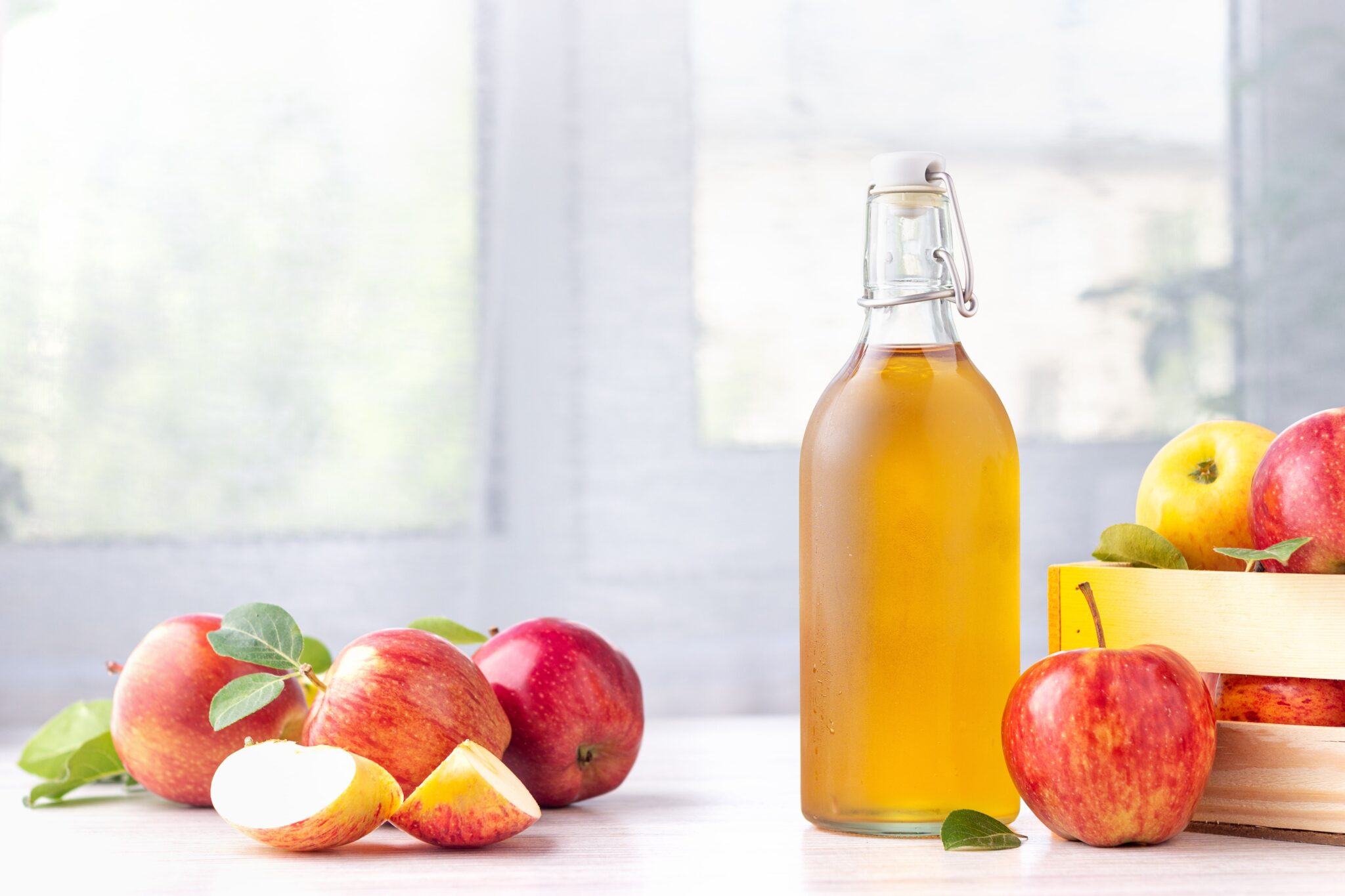
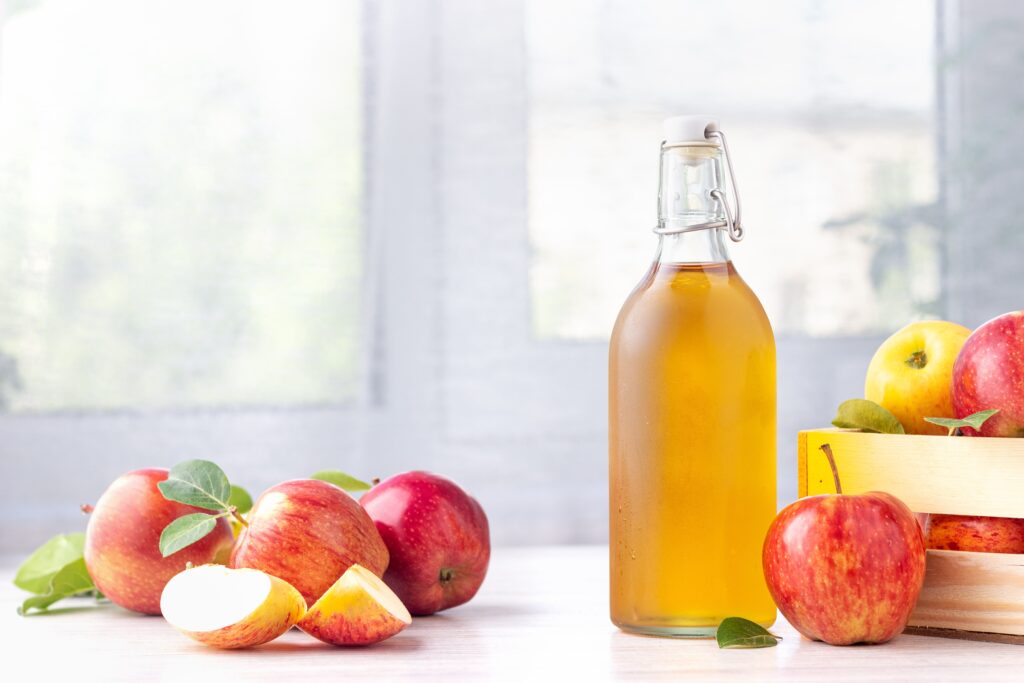
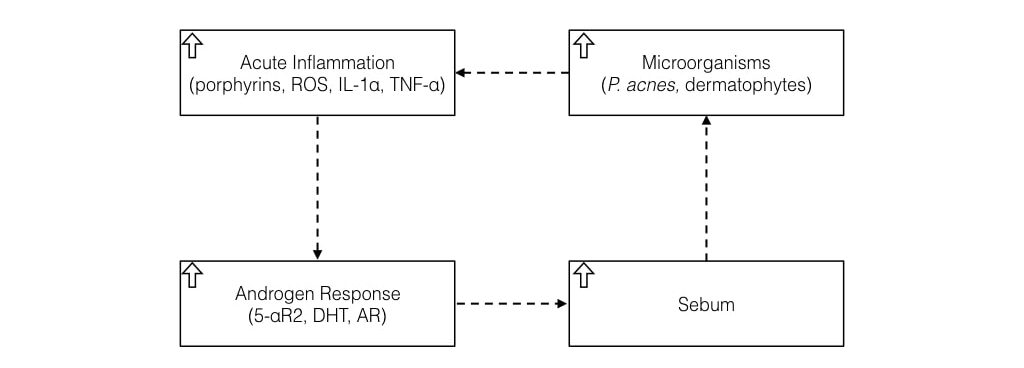
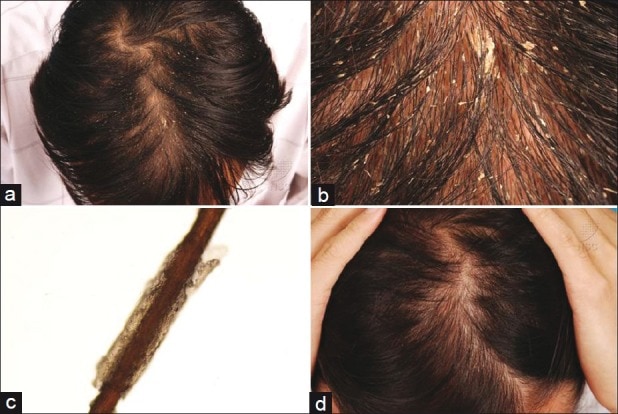

In the past I’ve used Apple Cider Vinegar inconsistently for my hair loss. I usually do 2 parts water, 1 part ACV. Yes the smell is horrible which is why I’ve had issues sticking to using it.
Here are some observations using ACV: I’ve tried massaging my scalp massage for 20 minutes and then applying ACV and going to bed with it in my hair. Pros: By the next morning my hair generally looks a bit firmer and has a healthy bounce to it. Cons: That terrible smell of ACV.
I dermaroll my entire scalp with a 1.5mm dermaroller once a month and apply ACV afterwards. When I do this my hair generally looks like crap for about 2-3 days but by the 4th day my hair starts looking really healthy and shiny.
Also something else I notice is anytime I leave ACV on overnight and use my Laser Helmet the next day my hair always looks and feels great. ACV seems to have a great synergy with LLLT (Or at least the kind of Laser Helmet I have). Rob do you think ACV could have some slight Anti-Calcification properties?
Do you feel any burning sensation applying ACV after dermarolling? Because ACV is very acidic!
Interesting… Have you though about garlic as a potential remedy? Garlic has been shown* to be as effective as finasteride in dealing with BPH. We know MPB is connected to BPH, so if something works for BPH it might work for MPB.
* https://bphnews.com/news-posts/2016/05/20/garlic-prevents-prostate-growth-in-bph-rat-model-triggering-molecular-changes/
Wassup guys,
not the right place to post i know, but since this is the most latest article posted as of now, it might be the most suitable to get yall opinion.
Honestly with all this MPB controversy, i have some theory floating around in my head which is basically a combination of the skull expansion theory and the DHT/androgens theory. i think that the MPB form of baldness occurs because the bones located at the scalp grow out till the point that the scalp skin is not able to provide enough elasticity, especially the bones located in the middle of the upper scalp, they start to become dome shaped/ like a mountain, it is this thightness which creates an uncomfort for the skin, and lets the body signal to send DHT/androgens to the area as an anti-inflammatory, but eventually the androgens get stuck at the tight bone areas causing an extensive heating of the area (+ fibrosis/calcification), where the result is that the skin gets damaged because of these androgens in a crowded bone area, and the hairs eventually come blood and oxygen short
it could also be that the androgens freely floating in the body, once they come in the upper scalp areas via the nerves, they realise that it is too crowded there, and they have a hard time of moving forward (through the nerves), then they become stuck and create the skin heating which results in excessive sebum (the skin is being pushed tightly together hence the sebum glands aswell), and fibrosis/calcification starts to occur. this might explain the shape of baldness, it starts at the widow peaks because this is the first place the androgenes realize that they have a hard time going forward through the nerves (because of the bones going through high till the point that blood flow becomes very sparse)
wouldnt a possible solution for this be to lower the bones at the upper scalp with the help of surgery? basically getting rid of the peak mountain shape by making that bone contact point flat?
looking out to opinions/valuable information